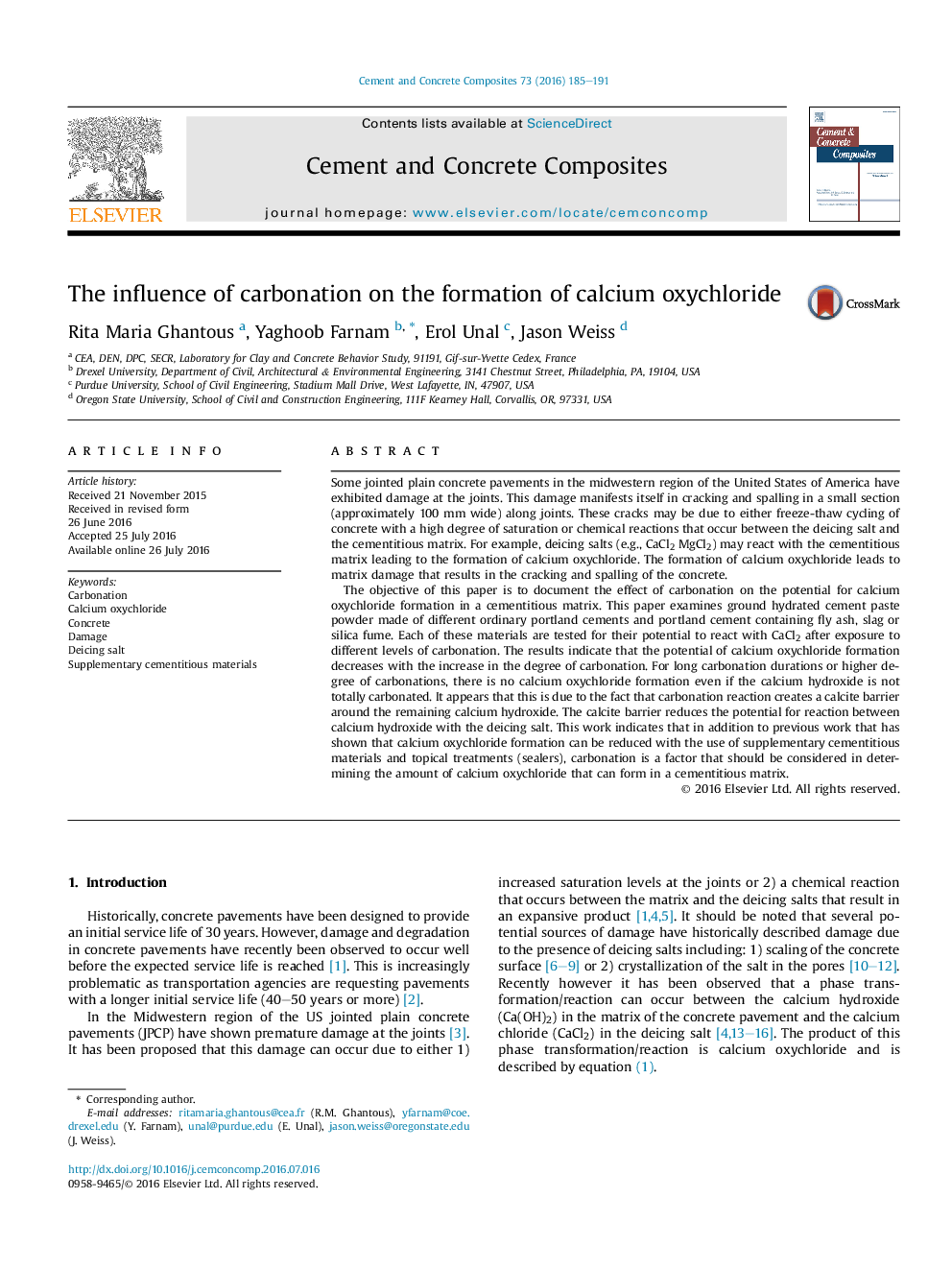| کد مقاله | کد نشریه | سال انتشار | مقاله انگلیسی | نسخه تمام متن |
|---|---|---|---|---|
| 1454240 | 1509660 | 2016 | 7 صفحه PDF | دانلود رایگان |
Some jointed plain concrete pavements in the midwestern region of the United States of America have exhibited damage at the joints. This damage manifests itself in cracking and spalling in a small section (approximately 100 mm wide) along joints. These cracks may be due to either freeze-thaw cycling of concrete with a high degree of saturation or chemical reactions that occur between the deicing salt and the cementitious matrix. For example, deicing salts (e.g., CaCl2 MgCl2) may react with the cementitious matrix leading to the formation of calcium oxychloride. The formation of calcium oxychloride leads to matrix damage that results in the cracking and spalling of the concrete.The objective of this paper is to document the effect of carbonation on the potential for calcium oxychloride formation in a cementitious matrix. This paper examines ground hydrated cement paste powder made of different ordinary portland cements and portland cement containing fly ash, slag or silica fume. Each of these materials are tested for their potential to react with CaCl2 after exposure to different levels of carbonation. The results indicate that the potential of calcium oxychloride formation decreases with the increase in the degree of carbonation. For long carbonation durations or higher degree of carbonations, there is no calcium oxychloride formation even if the calcium hydroxide is not totally carbonated. It appears that this is due to the fact that carbonation reaction creates a calcite barrier around the remaining calcium hydroxide. The calcite barrier reduces the potential for reaction between calcium hydroxide with the deicing salt. This work indicates that in addition to previous work that has shown that calcium oxychloride formation can be reduced with the use of supplementary cementitious materials and topical treatments (sealers), carbonation is a factor that should be considered in determining the amount of calcium oxychloride that can form in a cementitious matrix.
Journal: Cement and Concrete Composites - Volume 73, October 2016, Pages 185–191
